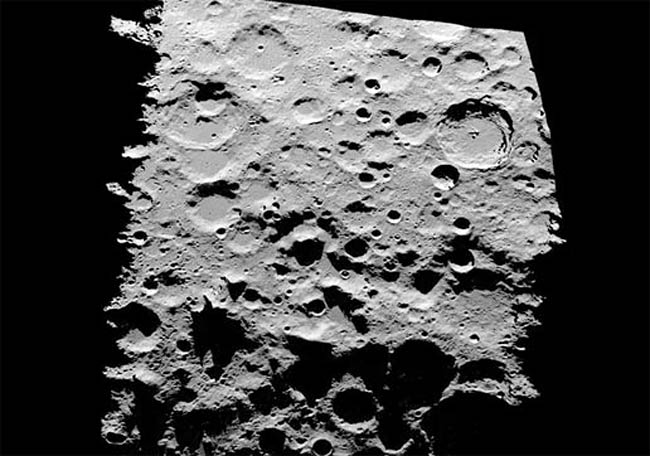Hopes Dashed for Ice on Moon

A permanentlyshadowed crater at the moon's south pole has long been suspected of harboring waterice deposits that might be used by future lunar colonists. No such luck, a newstudy suggests.
Scientists have debatedwhether or not these cold craters, constantly shielded from sunlight, couldcontain water ice, which could be melted for drinking water and potentiallyconverted into rocket fuel.
NASA's Lunar Prospectormission (1998?1999) recorded an enhanced signal of hydrogen in these features.Some scientists contend that this hydrogen is in the form of water ice.
ThePentagon's Clementine lunar orbiter (1994) gave positive indications of waterice in one of the cold depressions called Shackleton crater, some scientists think.Others have disputed this interpretation because Earth-based radar of that areareflected a signal more indicative of rock than ice.
New imagesof Shackleton taken by the Japanese lunar explorer satellite KAGUYA(SELENE) support the view that there likely aren't any exposed water icedeposits in the crater.
The imageswere made during lunar mid-summer, when enough sunlight is scattered off theupper inner wall of the crater to provide faint illumination of the inside ofthe crater.
JunichiHaruyama of the Japan Aerospace Exploration Agency and his team analyzed theimages and data. They suggest that temperatures in the crater are less than-297 degrees Fahrenheit (-183 degrees Celsius), certainly cold enough to holdice. But the images reveal no conspicuous brightness that would indicate apatch of pure water ice.
Breaking space news, the latest updates on rocket launches, skywatching events and more!
This newanalysis, detailed in the Oct. 24 issue of the journal Science, couldmean that there is no water ice present at all in Shackleton crater, or thatany ice that exists is mixed into the lunar dirt in low amounts, Haruyama andhis team concluded.
- Top 10 Cool Moon Facts
- Moon Water: A Trickle of Data and a Flood of Questions
- Images: The Moon in a New Light

Andrea Thompson is an associate editor at Scientific American, where she covers sustainability, energy and the environment. Prior to that, she was a senior writer covering climate science at Climate Central and a reporter and editor at Live Science, where she primarily covered Earth science and the environment. She holds a graduate degree in science health and environmental reporting from New York University, as well as a bachelor of science and and masters of science in atmospheric chemistry from the Georgia Institute of Technology.
